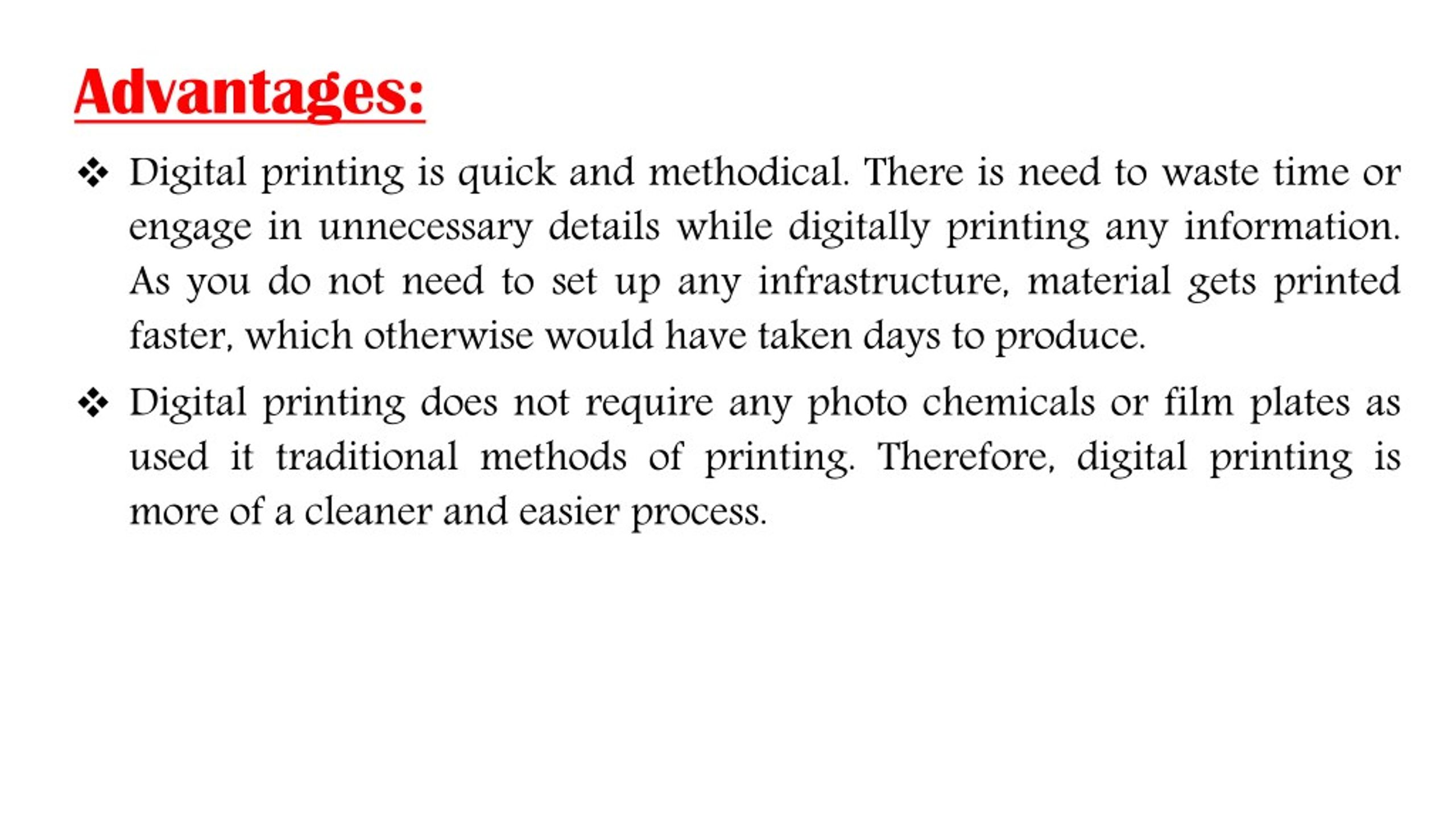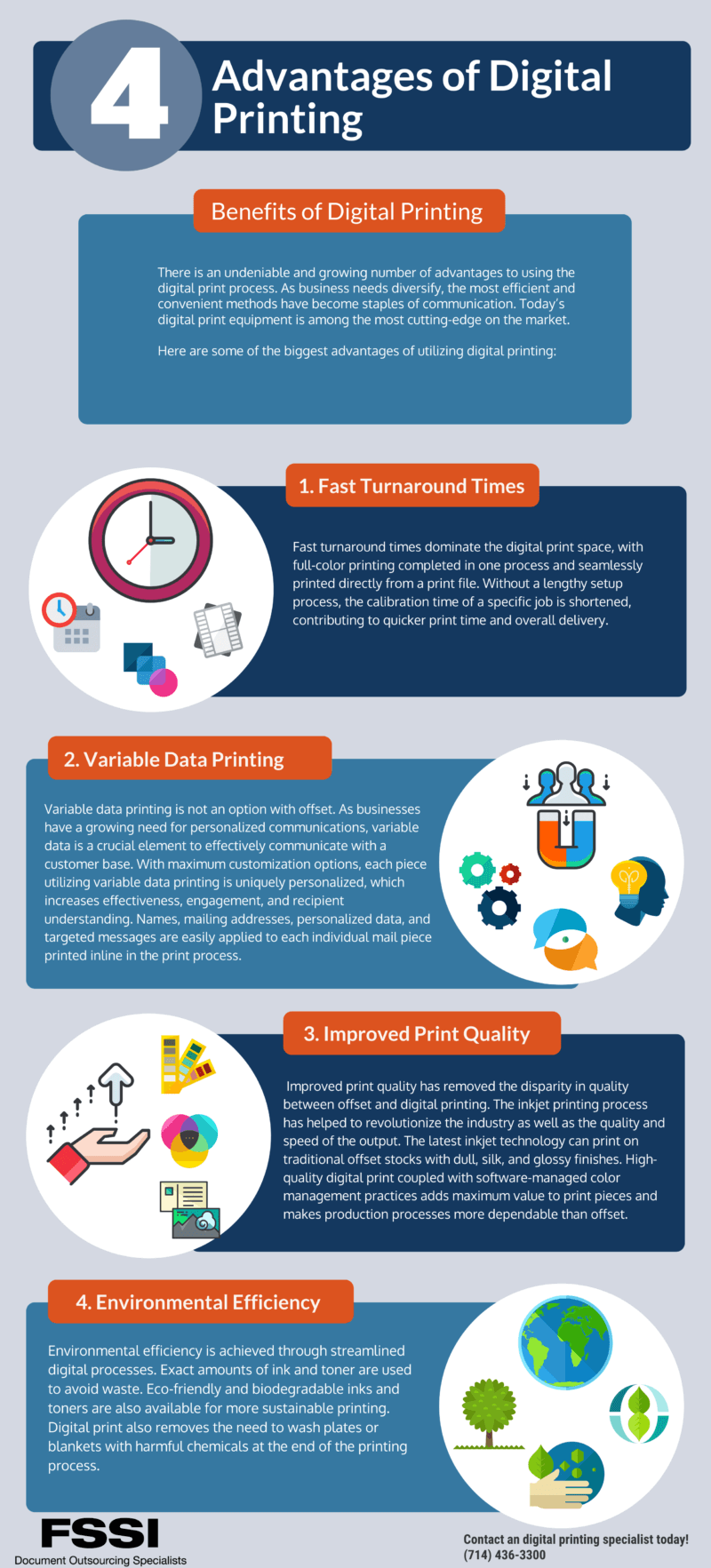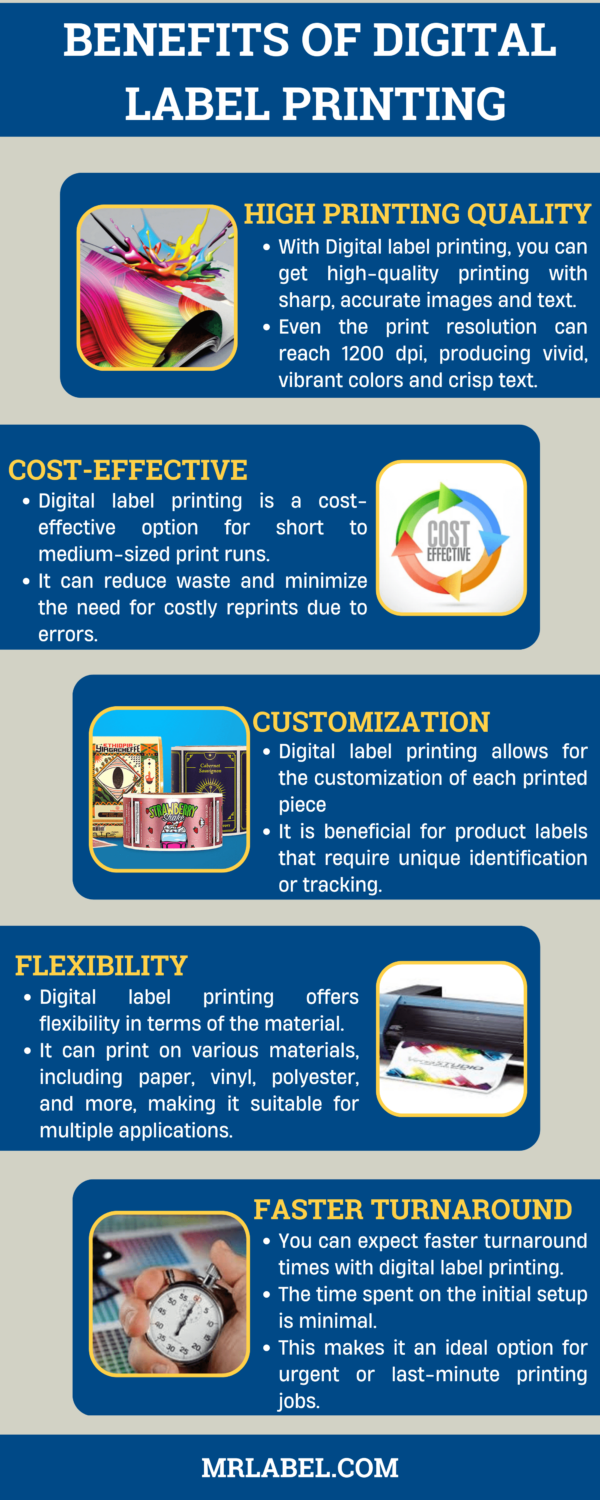The Best Guide To Digital Printing
Table of Contents6 Simple Techniques For Digital PrintingThe Buzz on Digital PrintingThe Of Digital PrintingSome Known Questions About Digital Printing.The Ultimate Guide To Digital Printing4 Simple Techniques For Digital Printing
Variable data printing, such as straight mail with customized codes and addresses, is preferably suited for electronic printing. Digital fast printing only requires four steps of layout, evaluation, printing and binding to obtain whatever done. Digital fast printing has an unrivaled benefit: print on demand.According to PMMI, electronic printing permits brands and makers to respond swiftly to customer demands while improving the supply chain, minimizing warehousing price and waste, and appreciating faster time to market. That all sounds excellent, but how does this innovation do all that? The significant differentiator of these modern technologies is that there are no set-up costs and no plates with digital printing.
Fascination About Digital Printing
According to Wikipedia, the best distinction between digital printing and standard techniques such as lithography, flexography, gravure, or letterpress - Digital Printing is that there is no demand to change printing plates in digital printing, whereas in these analog printing techniques the plates are repetitively changed. This leads to quicker turnaround time and decreases cost when making use of electronic printing.
Fast manufacturing indicates getting your item to market much faster. It also suggests it's less complicated and faster to make modifications later, when you transform a dish, include a SKU, or produce seasonal product packaging. Digital printing is extremely versatile, so it's easy to make adjustments to the plan layout swiftly. Everything goes back to home plates.
Extra supply can indicate more waste down the road. With traditional printing methods, short-run printing is simply not possible. Since a wonderful design can make or damage your product, electronic printing constantly creates high-quality, clear and vivid graphics each time. Digital printing on flexible bags adds the brilliant, vivid, and exact graphics that virtually bid consumers to get to out and touch them.
Digital printing is the process of printing digital-based pictures straight onto a variety of media substratums. There is no requirement for a printing plate, unlike with offset printing. Digital files such as PDFs or desktop computer posting data can be sent out straight to the digital printing machine to publish theoretically, photo paper, canvas, material, synthetics, cardstock and other substratums.
What Does Digital Printing Do?
According to PMMI, electronic printing permits brands and producers my explanation to react rapidly to client demands while improving the supply chain, minimizing warehousing cost and waste, and enjoying faster time to market. That all sounds excellent, but just how does this innovation do all that? The significant differentiator of these modern technologies is that there are no set-up charges and no plates with electronic printing.
This results in quicker turnaround time and decreases expense when making use of electronic printing.

The Only Guide to Digital Printing
With traditional printing techniques, short-run printing is just not feasible. Because a wonderful design can make or break your item, digital printing continually creates high-grade, clear and colorful graphics each time.

According to PMMI, digital printing enables brands and makers to respond swiftly to consumer visit this site demands while enhancing the supply chain, lowering warehousing price and waste, and delighting in faster time to market. That all audios wonderful, but exactly how does this innovation do all that? The major differentiator of these modern technologies is that there are no set-up charges and no plates with electronic printing.
The Best Guide To Digital Printing
According to Wikipedia, the best difference between digital printing and typical approaches such as lithography, flexography, gravure, or letterpress is that there is no demand to replace printing plates in electronic printing, whereas in these analog printing techniques the plates are repetitively changed. This results in quicker turnaround time and lowers cost when using electronic printing.
Rapid manufacturing suggests obtaining your item to market much faster. It additionally indicates it's less complicated and faster to make adjustments later, when you transform a dish, include a SKU, or produce seasonal product packaging. Digital printing is extremely versatile, so it's simple to make modifications to the bundle style promptly. All of it goes back to the plates.

Examine This Report about Digital Printing
Digital printing is the process of printing digital-based photos directly onto a variety of media substratums. There is no requirement for a printing plate, unlike with offset printing. Digital documents such as PDFs or desktop computer publishing files can be sent out directly to the electronic printing press to print theoretically, picture paper, canvas, material, synthetics, cardstock and other substratums.